Sra Pleng Quarry (ลานหินตัดสระเพลง) is hidden away in a forest at the foot of the Sankamphaeng Mountains in the south-central part of Ta Phraya National Park. A geologist from the Ministry of Mineral Resources who visited identified this grey sandstone as from the Phu Kradung Formation, which dates to around 150 million years ago. Geological maps of Thailand I’ve seen show this area to be the younger Sao Khua or Phra Wihan formations, but I’m no geologist.
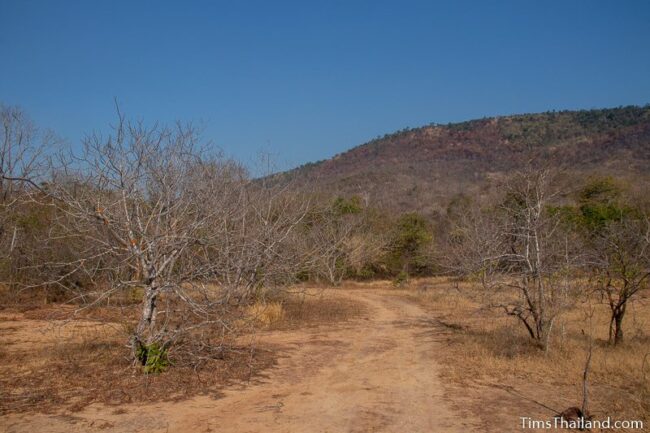
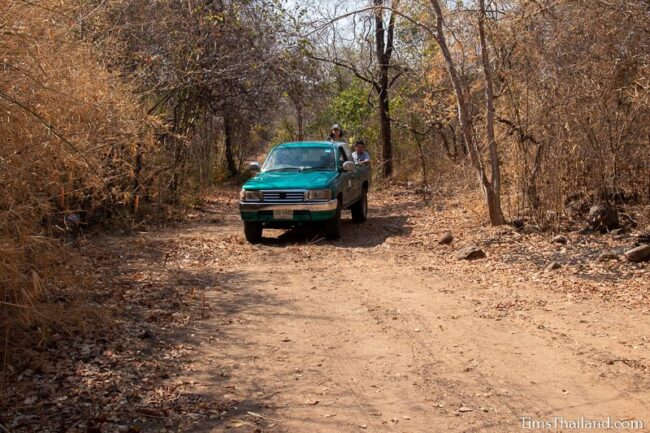
It’s not the absolute best quality building rock, but it has little conglomerate so it can be carved artistically. In most known Khmer quarries the presumed extraction method was to chisel a groove around the sides as deep as the block needed to be (these marks are visible all over the site) then break it off by filling this empty space with wood and water until the swollen wood caused the block to crack along its grain. At Sra Pleng it would usually have been possible to chisel the side of the block to break it off and some spots seem to show that this is what was done.
Where the sandstone blocks that were cut out of here went to is unknown. There are many Khmer temples close to Sra Pleng Quarry, though they’re built primarily of laterite and brick, using sandstone mostly for door and window frames, so this doesn’t account for the large amount of rock excavated here. Some sources (including the park rangers) say that Sra Pleng sandstone was used to build the large King Jayavarman VII-era (r. 1182-1219) Banteay Chhmar temple 25km to the east-southeast in modern-day Cambodia. The source of Banteay Chhmar’s sandstone is unknown and it’s certainly possible it was brought from Sra Pleng – a canal extends to the west from the temple – but there is also a quarry only about 10km to the south of Banteay Chhmar. It’s also possible that Sra Pleng sandstone went to Sdok Kok Thom (35km south-southwest of the quarry) and other large temples to the south.
There used to be many blocks laying around here that had been fully extracted but not yet sent off for construction, but most of these were hauled away half a century ago; probably by stone carvers making Buddha or similar statues.
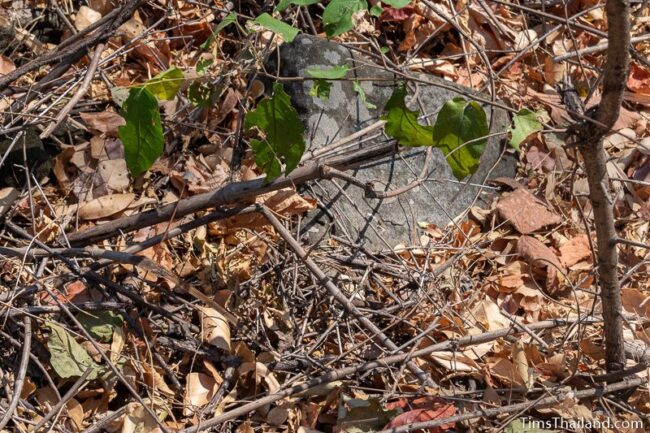
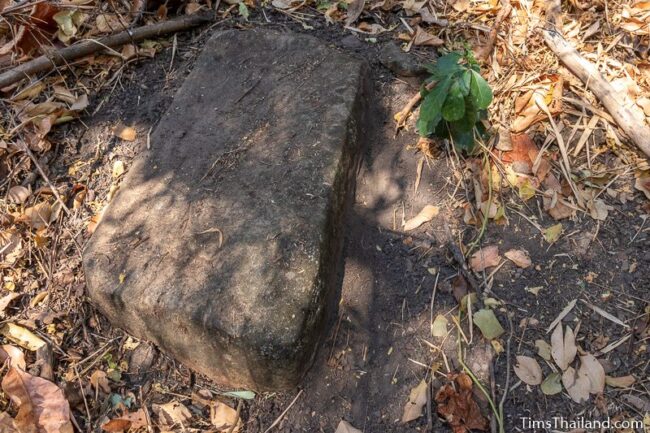
Right near the quarry, alongside the road heading there from the Thap Thai ranger station, is what appears to be the silted-in remnant of a baray, showing that there was probably a significant Khmer settlement here in the past. Sra Pleng means “Music Pond” and comes from an old legend of people hearing music in the forest here on monk day evenings.
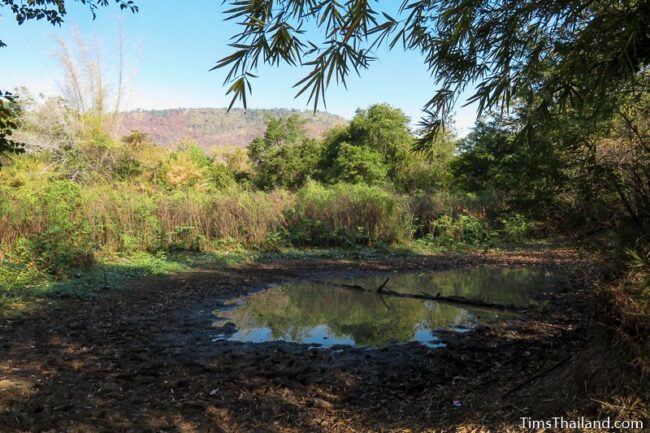
Western Section
Sra Pleng Quarry has two sections, though it’s possible others lie unexposed under dirt. The largest of the pair is to the west of the access road and has four main cutting sites along a short loop; about 500-600m walk in total. The path is a little rough in parts with some short but steep and slippery hills, though it’s not too difficult for most people. Along the way you’ll pass many rock stacks made for fun by people (mostly students, the rangers said) who’ve visited over the years.
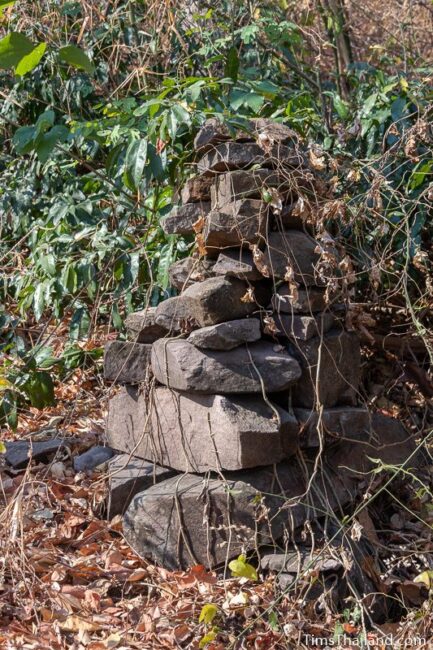
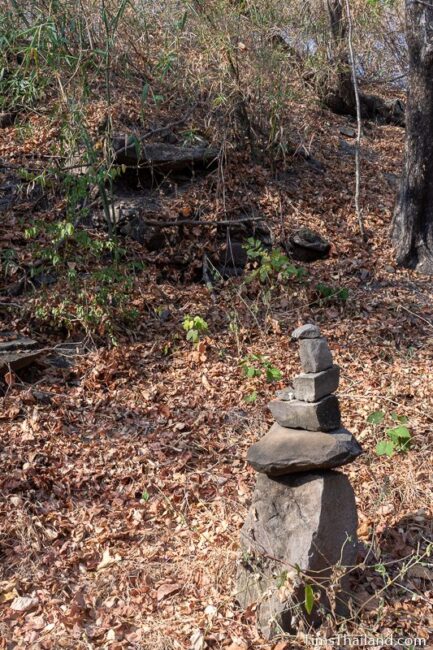
First Cutting
The first cutting site you reach is the smallest and least interesting of the four, but still worth a close look. At a few spots on the east side of this short rock wall you can see where blocks were carved out.
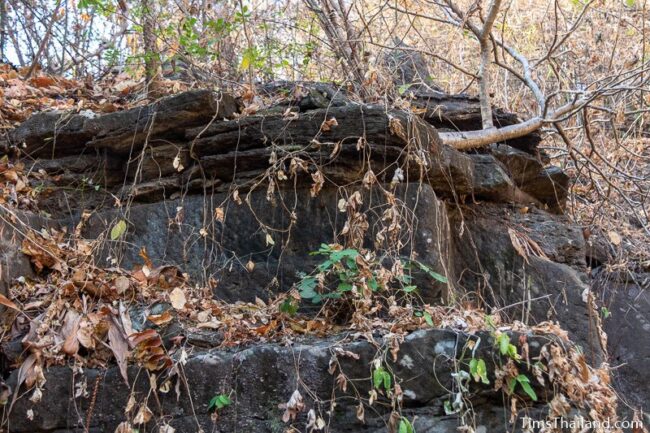
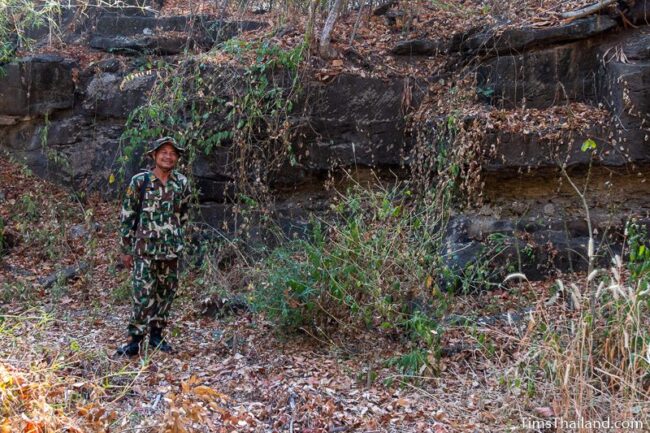
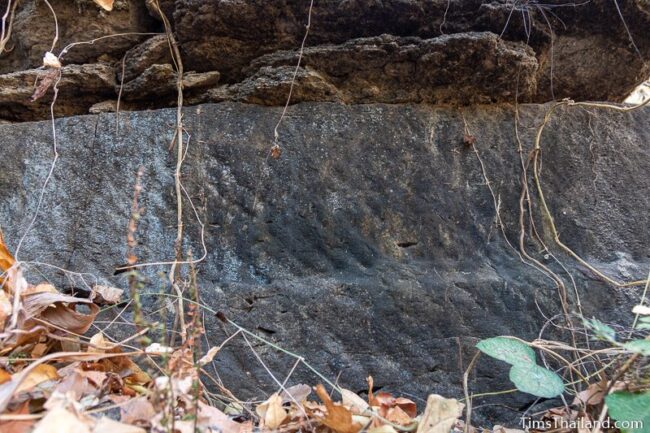
A few meters away (there’s a little path to the right just before you reach the rock wall) is a small exposed rock face with a few visible cut marks that haven’t yet completely eroded away.
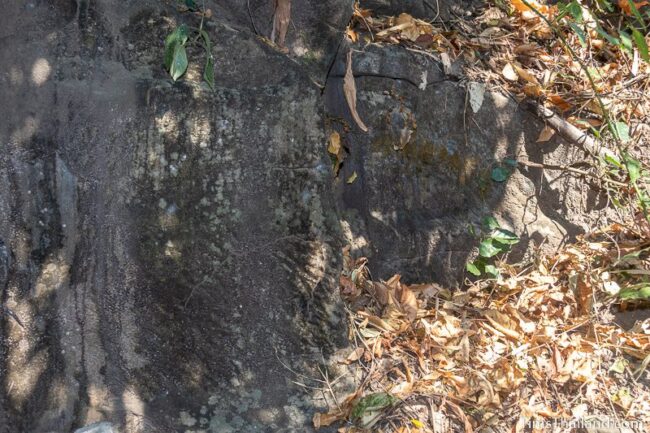
Second Cutting
The excavation around the long, narrow second cutting site almost make it look like it was dug as a thermal spa. It’s now full of dirt and rock, so it’s impossible to tell how deep it goes. In the rainy season, it fills with water. There’s no shrine, but the rangers offered a cigarette to the spirit of the site.
A second legend behind the Sra Pleng name says that one time when people went to investigate the mysterious music coming from the forest they discovered this cutting site, which looks like a sra (“pool”).
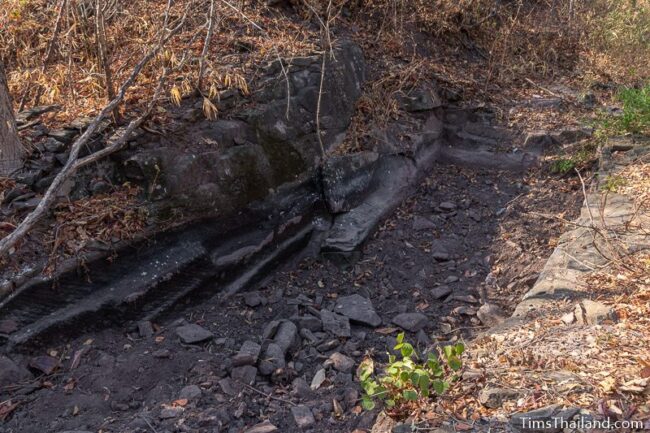
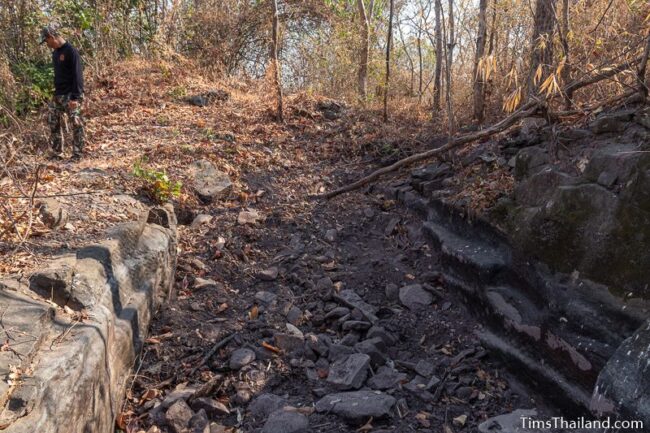
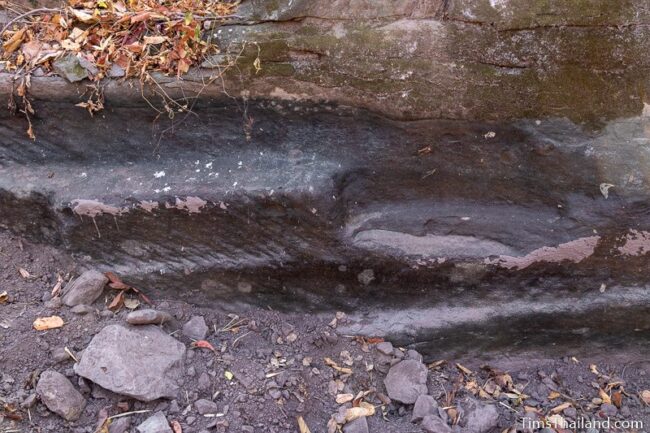
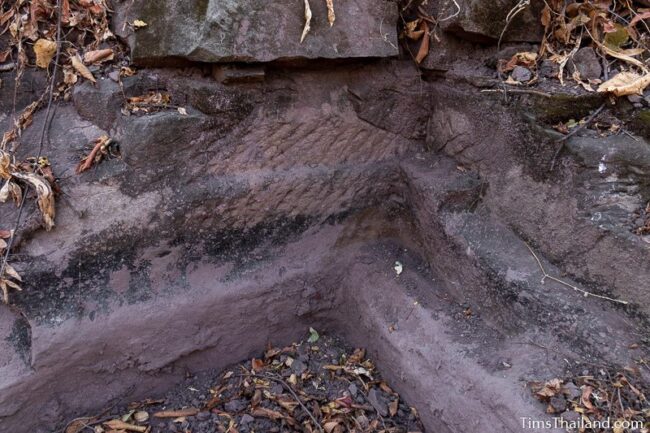
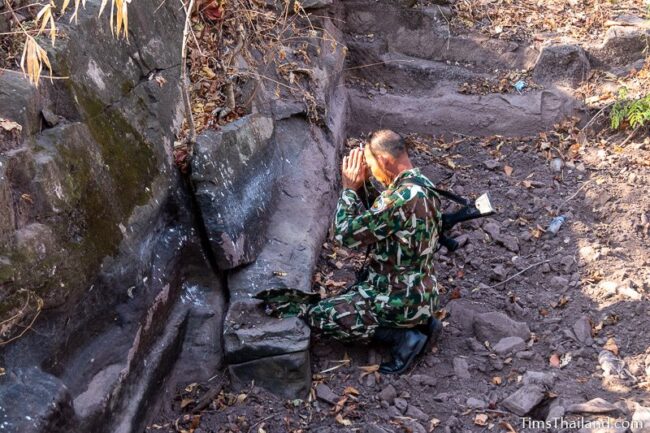
Third Cutting
Just below the second site, and requiring a steep climb down into a little basin, is Sra Pleng’s signature area. The long, serrated wall distinctly shows where the blocks have been cut out – a dozen or more (it’s not possible to clearly see the top) layers deep. Some left-behind blocks lie at the bottom. The rangers made a second spirit offering here at a little Phra Upakut statue.
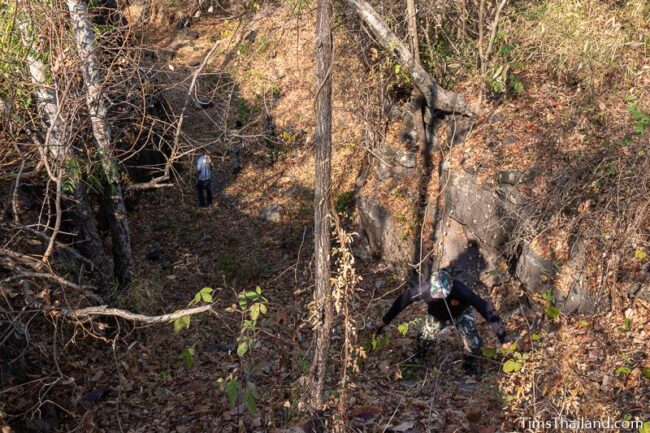
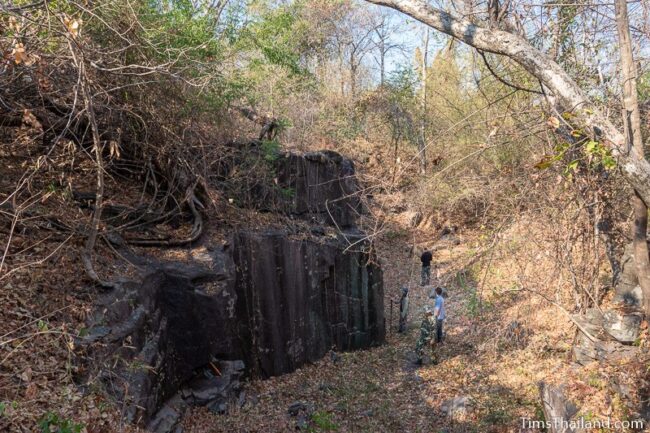
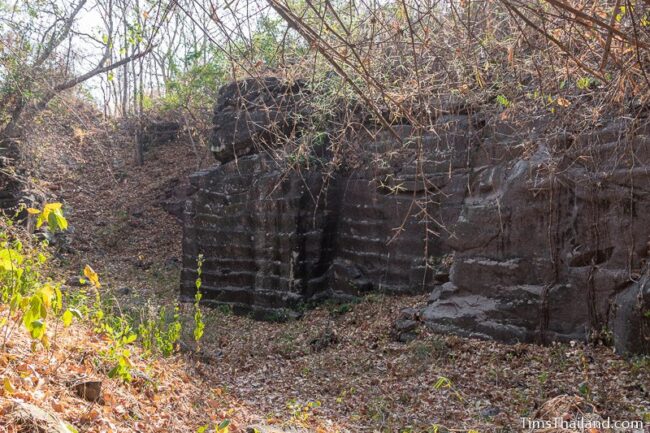
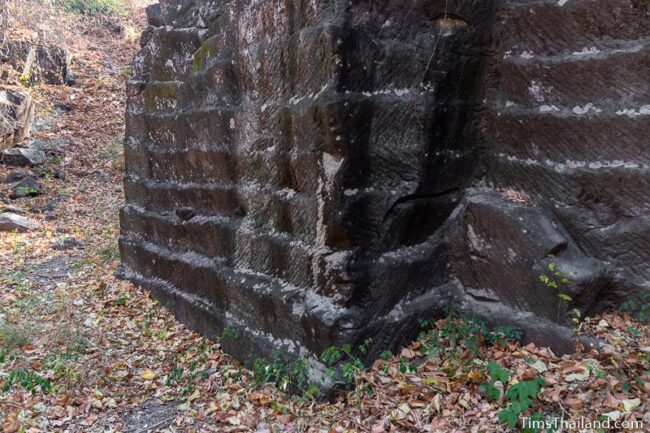
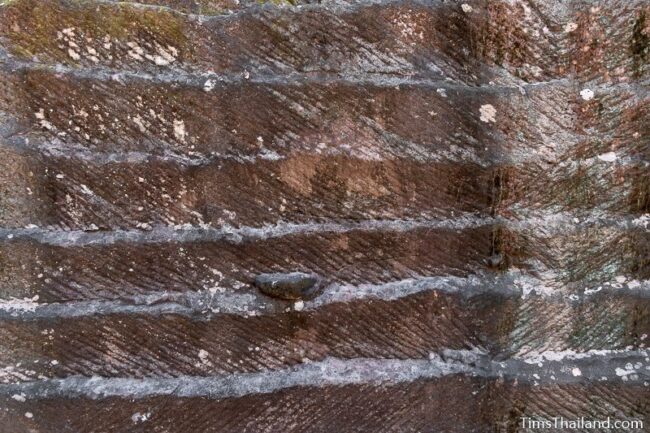
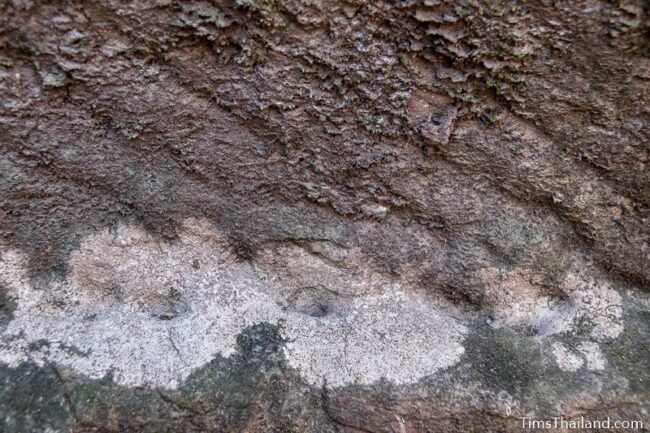
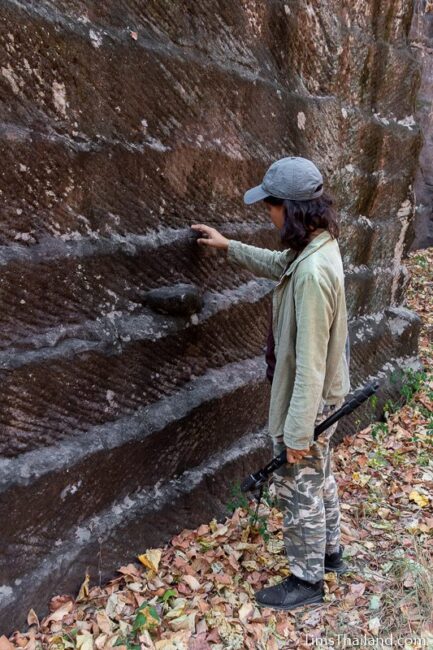
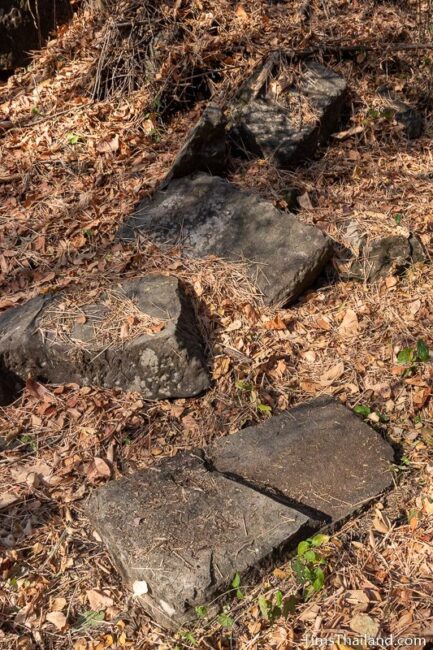
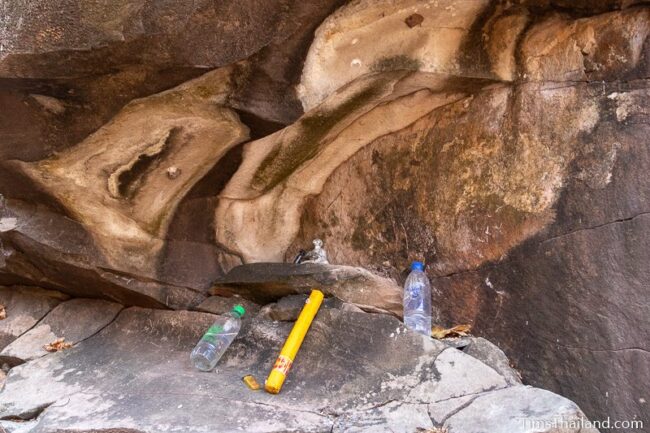
Fourth Cutting
Smaller than the third site, but still impressive, here there are two rock outcrops in another little basin, but most of the visible cutting is on the larger of the two, up the little hill.
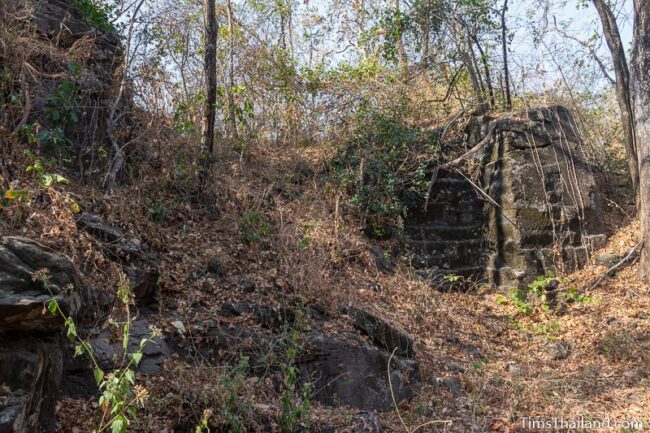
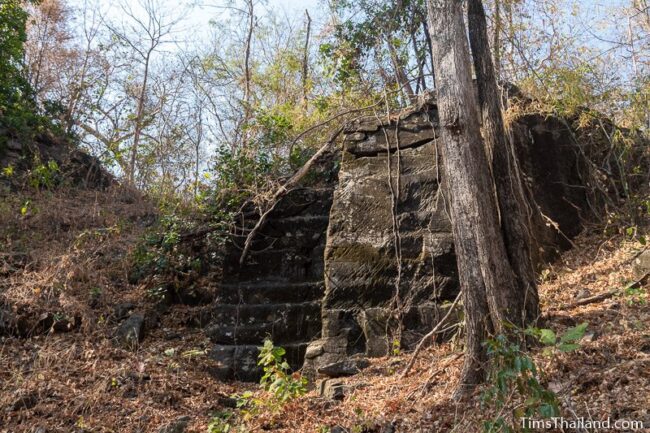
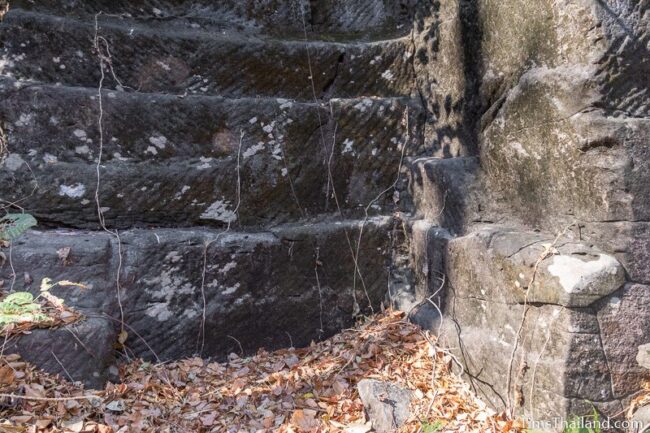
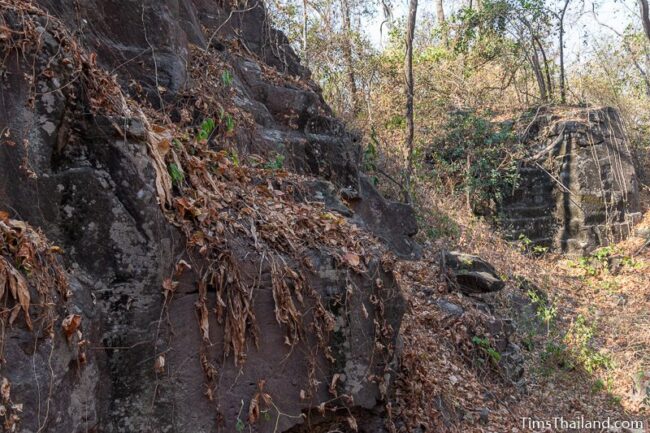
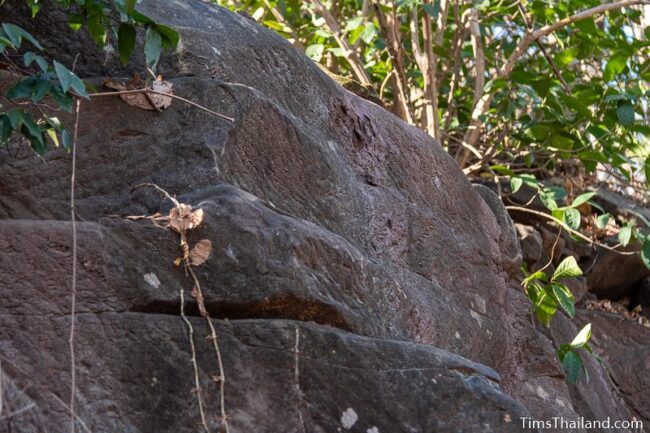
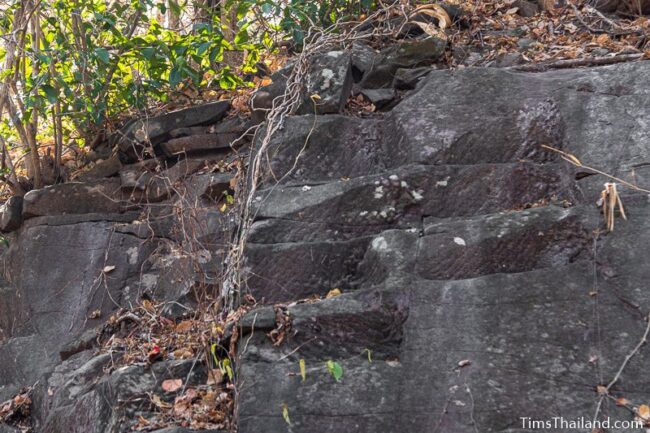
Eastern Section
Across the road from the main section is the smaller but still fascinating eastern half of Sra Pleng Quarry. Smaller, but not small: it’s still larger than most other Khmer-era quarry sites in Thailand. It’s a short easy walk, no more than 250m there and back, to see all three cutting sites.
First Cutting
The small first cutting to the east appears to have been a larger outcrop (similar to the next two) that has been mostly removed. Several partially cut blocks at ground level with unfinished grooves between them are still attached.
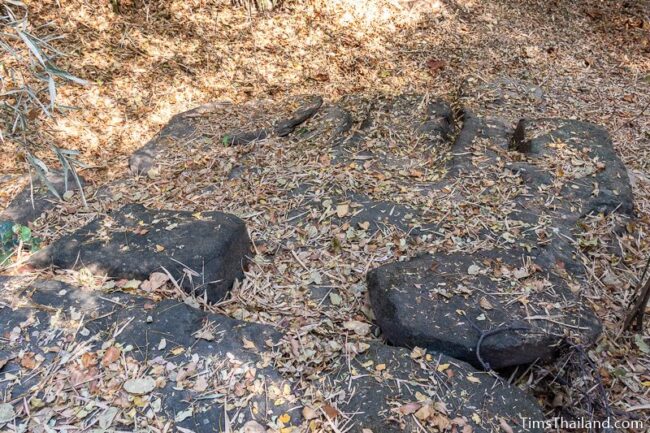
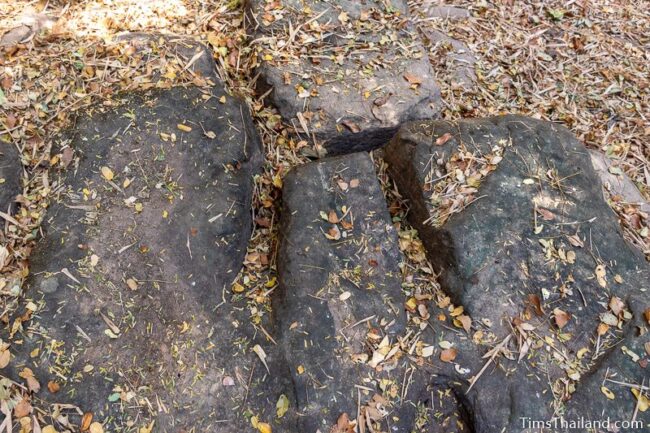
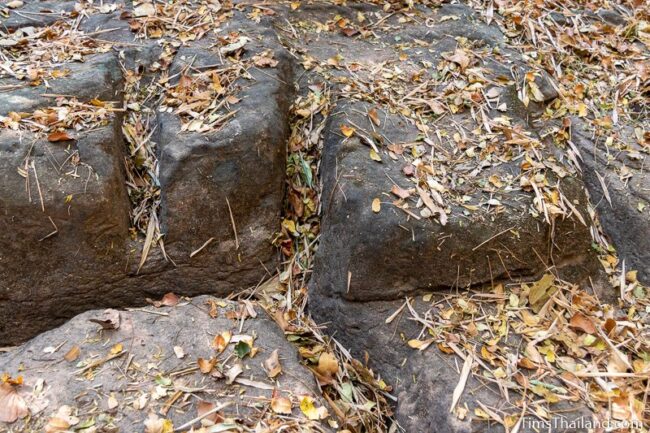
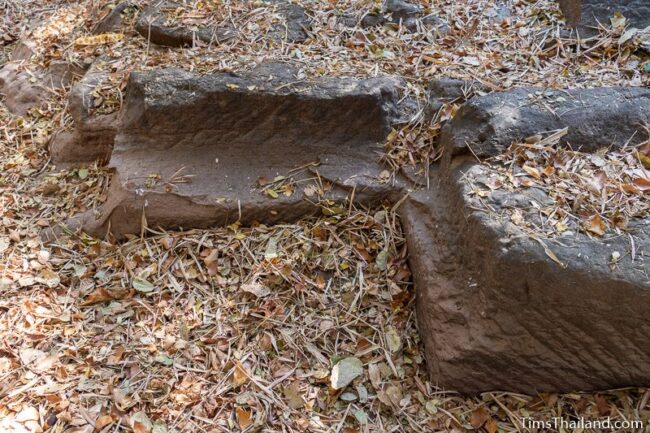
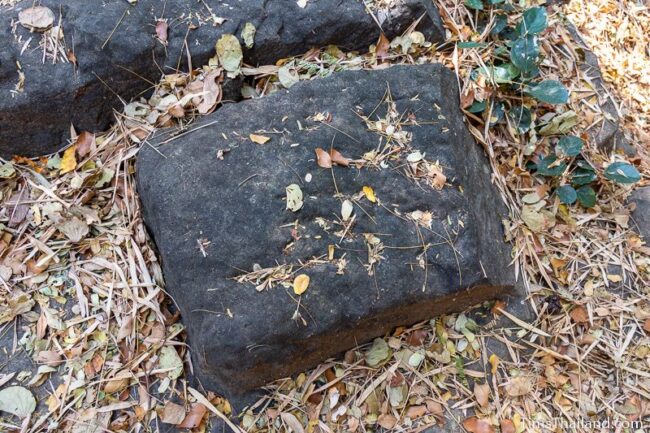
The next two cuttings are to the right, but if you go a few meters to the left you will see a small rock face with chisel marks on it.
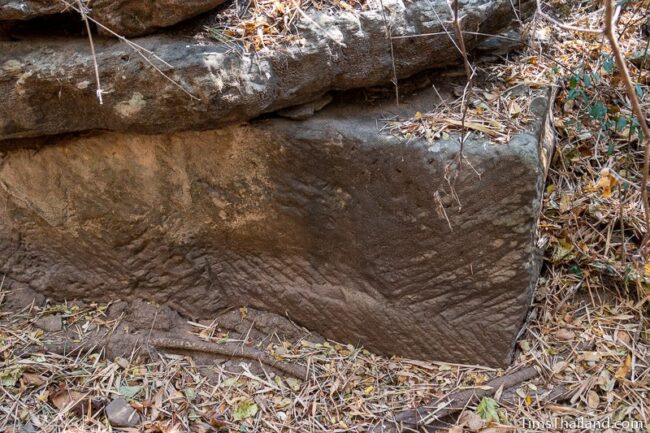
Second Cutting
This long rock wall is sort of like a small version of the western section’s third cutting. The ridges where the blocks were cut out are visible, but not as distinct as its western partner.
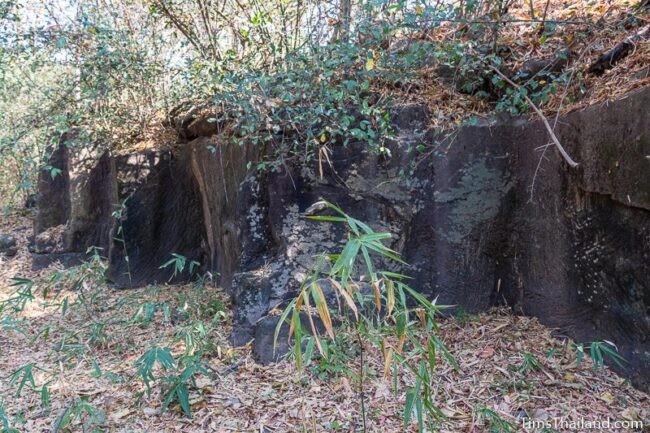
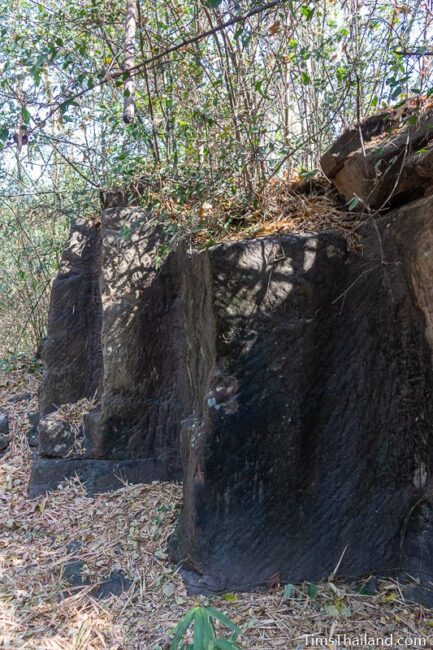
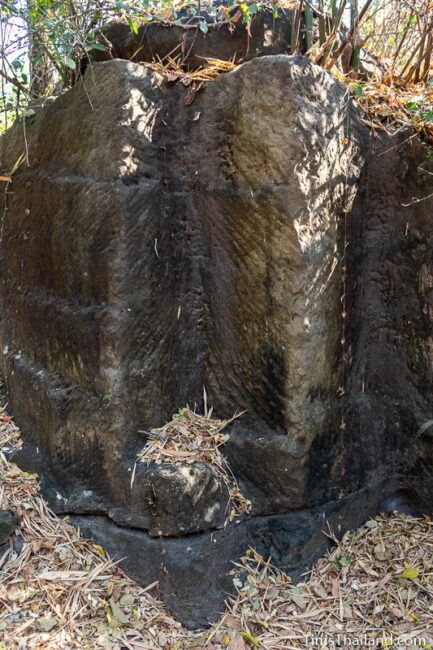
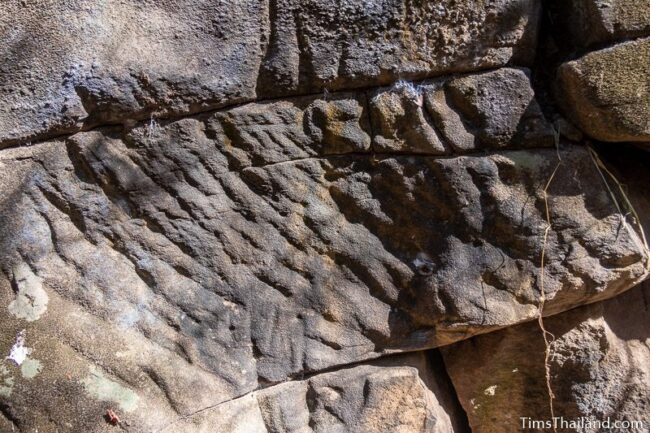
Third Cutting
The last and most interesting of the three eastern sites, this outcrop has been half removed, leaving a mound of half-cut blocks. It almost looks like it was built as a place to sit and relax in a park. In one corner block you can clearly see the holes cut to form the breaking point along the sandstone’s grain. The rangers lit candles and incense here as an offering.
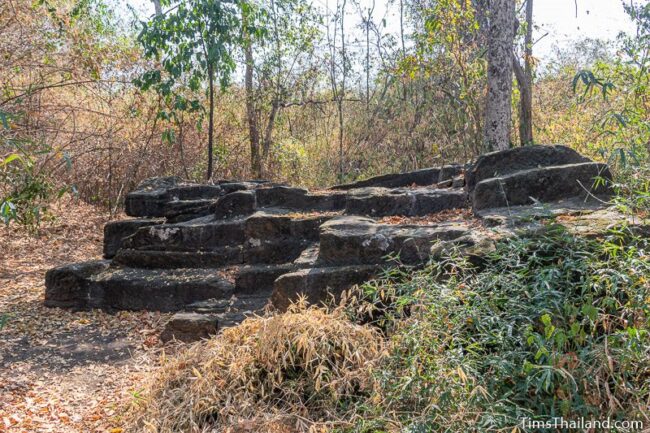
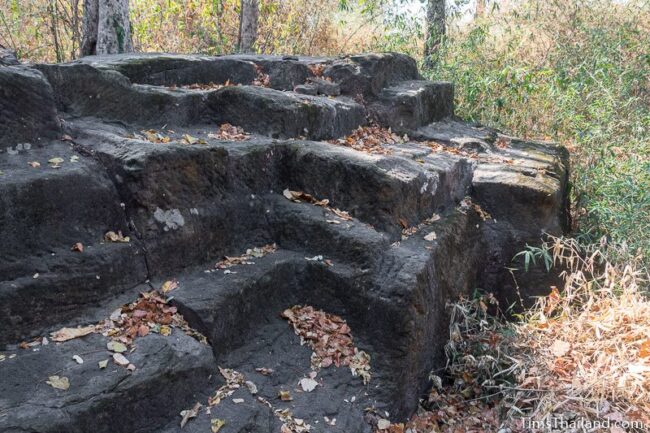
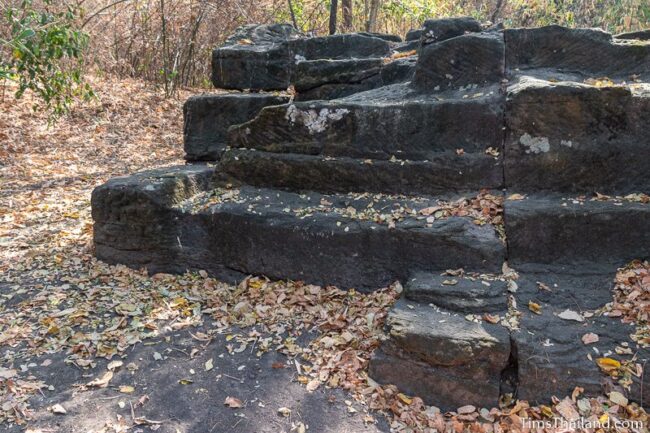
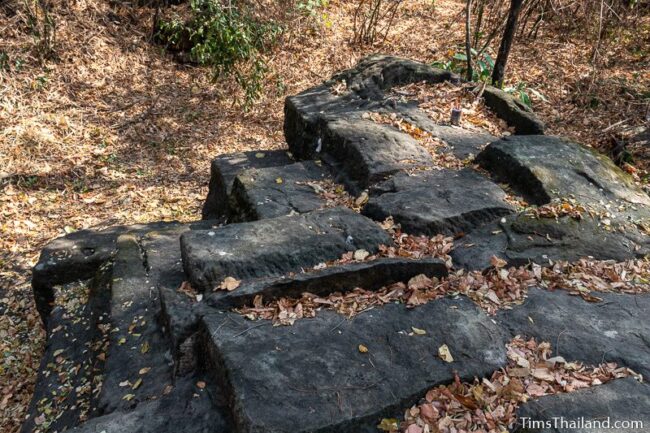
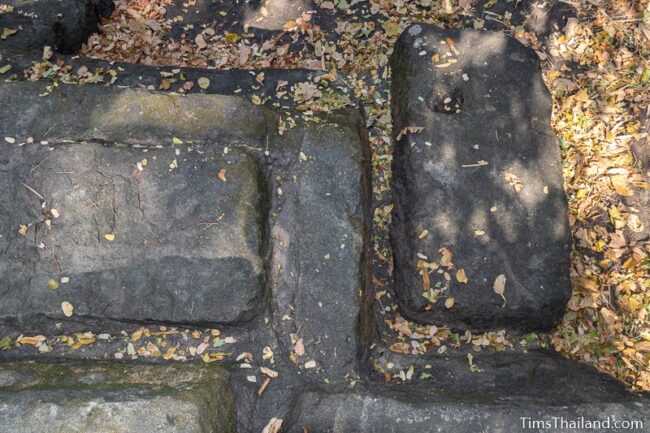
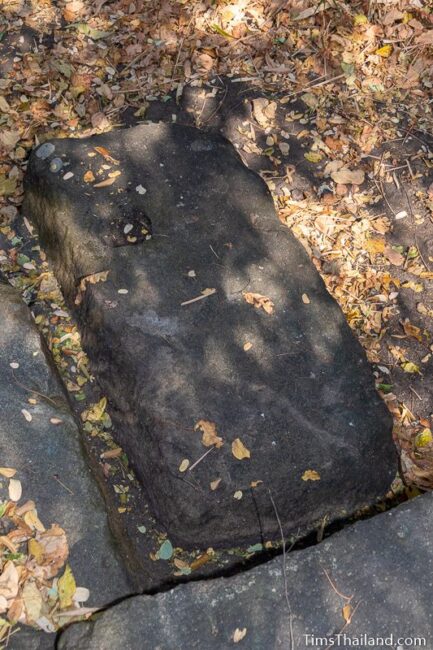
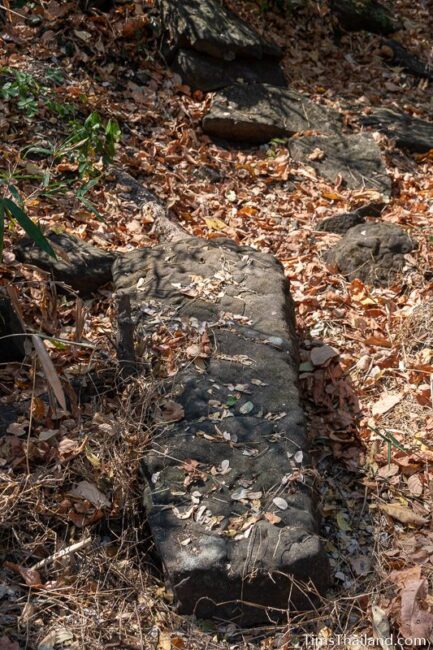
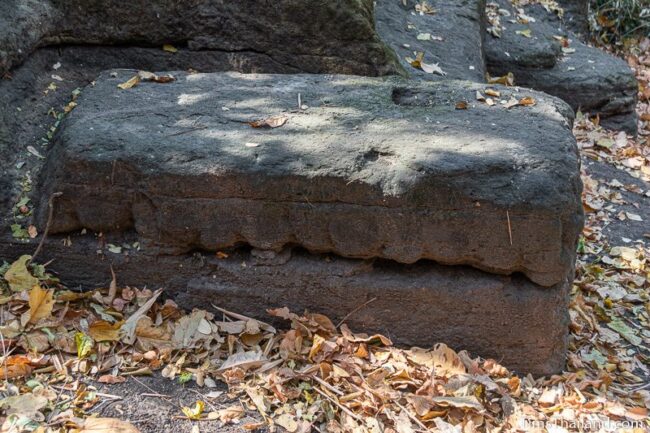
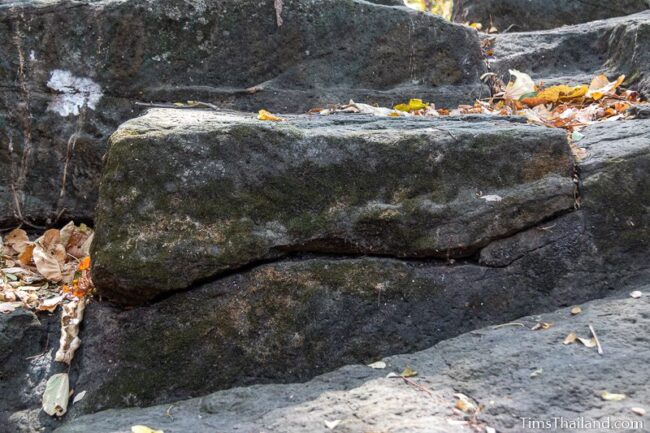
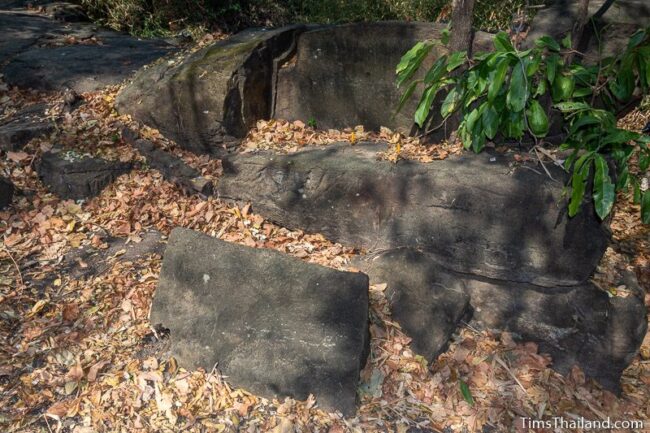
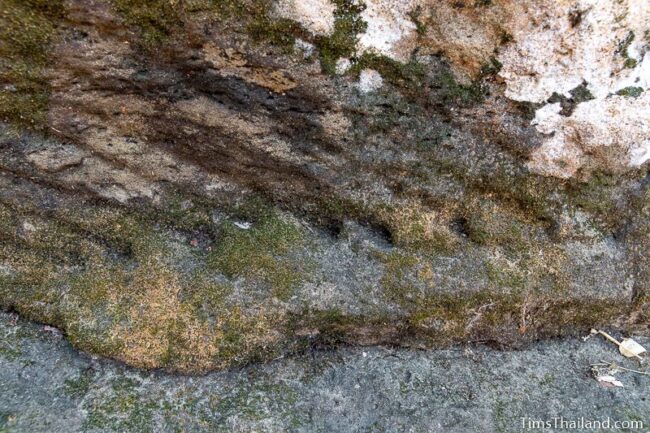
How to Visit
You must visit Sra Pleng Quarry with a park ranger, though you don’t need to pay park admission to visit this unit. A ranger is required both because it is the regulation of the park and also because there are no marked trails and the area is seldom visited. The cost of hiring the ranger is negotiable and depends on how much time you spend with them – typically they also take you some other local historic sites like Prasat Kabal Komot. Call the park headquarters (081-1788119) in advance to make arrangements. Note that there are still landmines in this section of the park (because it’s near the Cambodian border) though there are none right around the quarry.
Location – Tambon Thap Thai, Amphoe Ta Phraya, Sa Kaew Province
Other names – Kok Ta Duang Quarry (แหล่งหินตัดโคกตาด้วง), Tub Thai Quarry (แหล่งหินตัดทัพไทย), Thap Thim Quarry (แหล่งหินตัดทับทิม), Tubtim Quarry (แหล่งหินตัดทับทิม)
Baray photo by Suttawan Bewer.
2 thoughts on “Sra Pleng Ancient Quarry”
There are probably hundreds of small quarry sites in that region alone that may look like they are separated from each other but as a matter of fact, it could be one single giant quarry field. A similar misunderstanding was done in Phnom Kulen mountain in Siem Reap where they use Lidar and found out that the quarry sites were in fact one single massive quarry field.
I think there’s little doubt you are right.